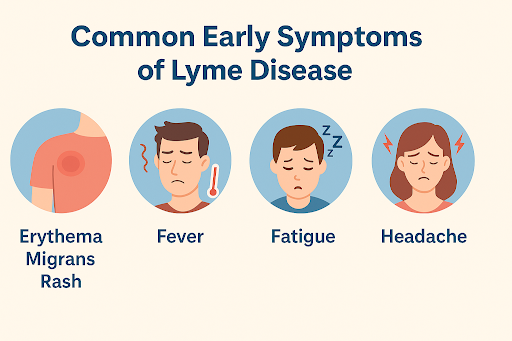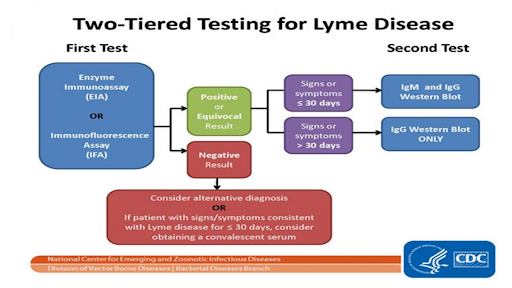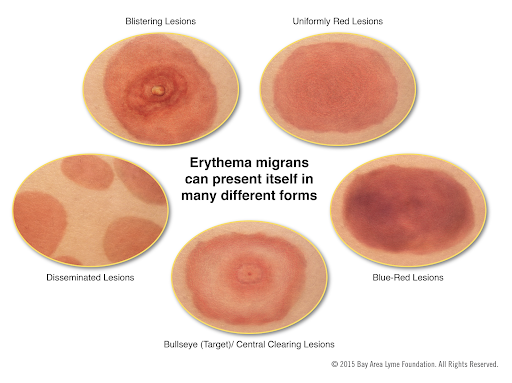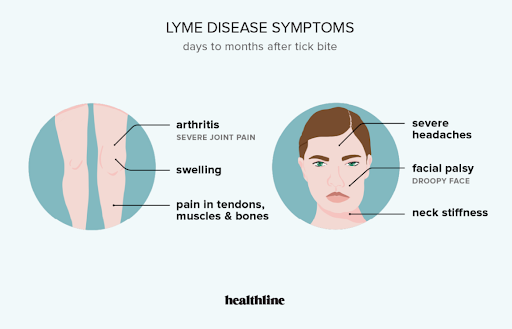How to Spot the Common Early Symptoms of Lyme Disease for Early Treatment


Lyme disease is a bacterial infection caused by Borrelia burgdorferi, which can be transmitted through infected black legged tick bite.
What makes this disease more tricky is that its early signs can be delicate and can mimic other common health issues, that is why identifying its early signs and symptoms is important for successful treatment methods.
In the first weeks after infection, people may experience flu-like symptoms, including headaches, muscle aches, fever and fatigue. A rash, referred to as bull’s eye rash, may appear at the site of the tick bite, but not everyone experiences this.
What are the common early symptoms of Lyme disease?

Identifying the early signs is important for effective treatment and to avoid progression of more severe phases.
Here are some early symptoms which comes after 3 to 30 days of tick bite:
- The first sign is flu-like symptoms, including fever and chills.
- Continuous headache and sometimes severe.
- Tiredness that is not relieved by rest.
- Muscle, joint pain and discomfort.
- Swollen Lymph nodes in the area of tick bite.
- ER (Erythema Migrans) rash occurs in 70-80% of infected individuals, and begins at the location of tick bite after 3 to 30 days. This rash can expand gradually over several days, developing up to 12 inches or more and feel warm.
If anyone experiences any one of these signs and had a recent tick bite incidence or travelled in a tick prone area where Lyme disease occurs, consult a healthcare expert immediately, because early detection and treatment is always better than to wait for a condition to increase.
How can Lyme disease be diagnosed in its early stages?

According to CDC a two step serologic testing process is required to confirm Lyme disease in individuals having symptoms and history of tick exposure.
Clinical Assessment :
- Process starts with assessing the patient’s symptoms and potential exposure to tick bites.
- If Lyme disease is observed in the presence of ER rash, then treatment may initiate without waiting for test results.
- In the case of ER rash absence, still laboratory testing becomes essential.
Laboratory Testing in 2 steps :
- 1st step – EIA (Enzyme Immunoassay) to detect antibodies.
- 2nd step – If the first step will go positive, a Western Blot assay is performed to reconfirm the presence of antibodies.
- Both tests can be performed using the same sample of blood.
Duration of Testing :
- This is also important to know that antibody tests may not detect Lyme disease in its early stages.
- Actual antibodies develop within 4 to 6 days after the infection.
- Hence, if someone tested in the first few weeks then they may not receive true results.
What causes the bullseye rash in Lyme disease?

- The characteristic – bull’s – eye rash, as erythema migrans (EM), associated with Lyme disease, is directly related to the skin’s reaction to the Borrelia burgdorferi bacteria transmitted through the bite of an infected tick.
- This rash develops at the site of the tick bite about a week after the bite and slowly expands.
- While many erythema migrans rashes exhibit the bull’s- eye appearance, it is important to note that not all present this way. Some may appear as red spots without central clearing.
- The rash may feel warm to the touch but is usually not painful or itchy. Identifying these variations is important for early detection and treatment of Lyme disease.
Can Lyme disease symptoms resolve without treatment?

- Sometimes, patients with Lyme disease might observe their symptoms easing or even disappearing for a while without getting any treatment. However, this doesn’t mean the infection is not there.
- Immediate help from a healthcare expert is crucial even if you are feeling better on your own.
- Without proper antibiotic treatment courses, the Borrelia burgdorferi bacteria can stay in the body and lead to disease to increase. If Lyme disease is untreated, it can lead to serious health
How can tick bites leading to Lyme disease be prevented?
Prevention of tick bites is one of the main ways to lower the risk of getting Lyme disease.
Here are some effective steps to avoid Lyme disease:
- Stay away from Tick Prone Areas – Ticks live in tall grass, and leafy areas. If possible, try to avoid spending time.
- Dress accordingly – Wearing the right clothing can prevent ticks off the skin. Choose light coloured clothes in place of dark coloured clothes, to spot ticks easily. long sleeved shirts should be tucked into pants, and pants to shocks.
- Tick repellents – Like DEET, picaridin, and lemon eucalyptus oil, can be used on skin, clothing, and shoes to prevent ticks.
- Check for ticks – After coming from the outdoors, do a full body check with extra attention to hidden areas like underarms, behind the knees, ears, and on the scalp or hairline.
Are there long-term effects of Lyme disease if left untreated?
If Lyme disease goes untreated, it can spread throughout the body and cause serious chronic health problems. That’s why early detection and antibiotic treatment are essential. Such as:
- Ocular manifestations
- Neurological Complications
- Sleep Disturbances
- Liver issues
- Chronic Lyme disease
- Ocular manifestations – Lyme disease can affect the eyes in many ways, blurred vision, light sensitivity, floaters, or conjunctivitis. In severe cases, it may lead to vision loss.
- Neurological complications – The bacteria behind Lyme disease Borrelia burgdorferi may disturb the nervous system, which can result in conditions like – facial paralysis, meningitis, and nerve pain.
- Sleep disturbances – When Lyme disease affects the brain, it can cause disturbance in sleep. Many patients experience insomnia and difficulty in falling asleep because of neurological changes affecting sleep regulating areas of the brain.
- Liver issues – This is rare, but if untreated Lyme disease may cause liver inflammation.
- Chronic Lyme disease -It the infection not detected and treated on time, it can become chronic. This can cause persistent symptoms like – fatigue, joint pain, and cognitive issues which affect the wellness of life.
Conclusion
Detection and treatment early of Lyme disease are crucial to prevent severe complications, because its initial symptoms can be mild or mistaken for other conditions, understanding the warning rash such as erythema migrans rash, flu symptoms, and neurological complications is important.
Prevention remains a main key strategy in reducing Lyme disease cases. Simple precautions like – wearing protective clothes, using tick repellents, and performing regular tick checks can significantly lower the risk of tick bites.
Reference
- CDC. 2024. “Signs and Symptoms of Untreated Lyme Disease.” Lyme Disease. May 15, 2024. https://www.cdc.gov/lyme/signs-symptoms/index.html.
- CDC. 2024. “Testing and Diagnosis for Lyme Disease.” Lyme Disease. May 20, 2024. https://www.cdc.gov/lyme/diagnosis-testing/index.html.
- Alliance, Global Lyme. n.d. “Lyme Disease Diagnosis – Global Lyme Alliance.” Www.global lyme alliance.org. [GLA]
- Center, Johns Hopkins Lyme Disease Research. 2020. “Think the Lyme Disease Rash Is Always a Bullseye? THINK AGAIN!” Johns Hopkins Lyme Disease Research Center. May 7, 2020. [Johns Hopkins Lyme Disease]
- Rebman, Alison W., Ting Yang, Isaac Yoon, Debra Powell, Steven A. Geller, and John N. Aucott. 2023. “Initial Presentation and Time to Treatment in Early Lyme Disease.” The American Journal of Tropical Medicine and Hygiene 108 (4): 734–37. https://doi.org/10.4269/ajtmh.22-0437.
